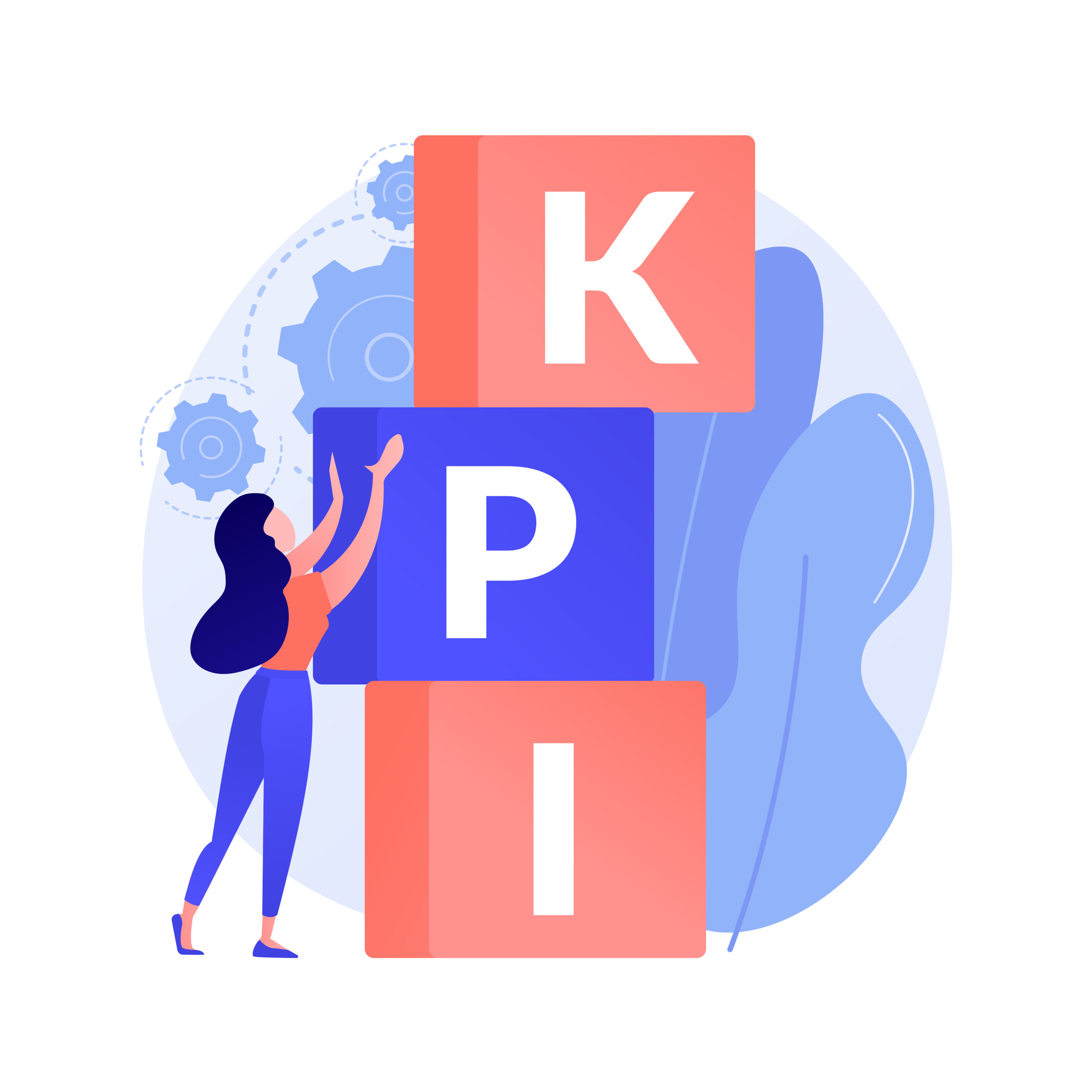
Introduction
The dynamic world of employment agencies requires more than just effective leadership and a dedicated team. With the increasing competition and continuously changing market, data-driven decision-making and strategies have become essential. Metrics and Key Performance Indicators (KPIs) have gained significance in this domain, offering valuable insights for an employment agency to operate at an optimal level. But what are these metrics, and how can they be leveraged effectively?
The Power of SMART Goals in Employment Agency Management
The foundation of a successful business lies in a set of well-articulated objectives. In the context of employment agency management, these objectives are often framed through SMART goals—Specific, Measurable, Achievable, Relevant, and Time-bound.
The specificity of the goal provides clarity to all stakeholders involved. Measurability allows for tracking progress and provides tangible evidence of advancement. Achievability ensures that the goal is realistic, boosting motivation. Relevance ensures strategic alignment with the broader organizational vision. And being time-bound infuses a sense of urgency and fuels momentum.
But how can you ensure that your SMART goals are met? This is where Key Performance Indicators (KPIs) play a vital role. KPIs are quantifiable measures that gauge an organization’s effectiveness in achieving its objectives. By aligning KPIs with SMART goals, employment agencies can keep track of their progress and adjust strategies as necessary, ensuring their goals are within reach.
The specificity of the goal provides clarity to all stakeholders involved. Measurability allows for tracking progress and provides tangible evidence of advancement. Achievability ensures that the goal is realistic, boosting motivation. Relevance ensures strategic alignment with the broader organizational vision. And being time-bound infuses a sense of urgency and fuels momentum.
But how can you ensure that your SMART goals are met? This is where Key Performance Indicators (KPIs) play a vital role. KPIs are quantifiable measures that gauge an organization’s effectiveness in achieving its objectives. By aligning KPIs with SMART goals, employment agencies can keep track of their progress and adjust strategies as necessary, ensuring their goals are within reach.
Understanding Metrics in Performance Management
Performance metrics are quantifiable measures used to assess an organization’s success or the effectiveness of a specific activity it engages in. For an employment agency, these could include the number of placements made, average time-to-fill for vacancies, or satisfaction levels of clients and candidates.
Performance metrics are invaluable for performance management. They provide insights into the agency’s strengths and improvement areas. By monitoring these metrics, agencies can identify trends, measure progress against goals, and make data-driven decisions to enhance performance. So, how can you use these metrics to measure and improve performance?
To utilize metrics effectively, identify key areas of your agency’s operations that directly impact its success. Define metrics that best measure performance in these areas. Once the metrics are defined, gather data regularly and analyze the results. These insights can help formulate strategies to improve performance, whether it’s increasing placements, reducing time-to-fill, or enhancing client and candidate satisfaction.
Performance metrics are invaluable for performance management. They provide insights into the agency’s strengths and improvement areas. By monitoring these metrics, agencies can identify trends, measure progress against goals, and make data-driven decisions to enhance performance. So, how can you use these metrics to measure and improve performance?
To utilize metrics effectively, identify key areas of your agency’s operations that directly impact its success. Define metrics that best measure performance in these areas. Once the metrics are defined, gather data regularly and analyze the results. These insights can help formulate strategies to improve performance, whether it’s increasing placements, reducing time-to-fill, or enhancing client and candidate satisfaction.

Key Performance Indicators (KPIs) in Attracting and Hiring Talent
KPIs provide significant insights into an employment agency’s success in attracting and hiring top talent. They measure critical activities leading to successful hires, such as sourcing strategies, screening methods, and interview processes.
KPIs like quality of hire, time to hire, cost per hire, and offer acceptance rate are valuable in talent acquisition. A high quality of hire KPI may suggest effective sourcing and selection methods, while a low cost per hire KPI might indicate efficient resource utilization.
However, while it’s essential to track these KPIs, it’s equally important not to lose sight of the bigger picture. Select the most relevant KPIs that align with your agency’s goals and focus on improving them.
KPIs like quality of hire, time to hire, cost per hire, and offer acceptance rate are valuable in talent acquisition. A high quality of hire KPI may suggest effective sourcing and selection methods, while a low cost per hire KPI might indicate efficient resource utilization.
However, while it’s essential to track these KPIs, it’s equally important not to lose sight of the bigger picture. Select the most relevant KPIs that align with your agency’s goals and focus on improving them.
How to Measure Performance with Key Performance Indicators
Measuring performance with KPIs requires a systematic approach involving data collection, analysis, and interpretation. Start by defining your agency’s goals and the KPIs that align with these goals.
Set up a process for data collection. This can be done manually, but many agencies now use advanced recruitment software that automatically collects and analyzes data, saving valuable time and reducing the risk of errors.
Once data has been collected, analyze it. Look for trends, patterns, and anomalies. If a particular KPI is consistently below the target, it may indicate an area needing improvement. Conversely, if a KPI is frequently exceeding the target, it might suggest a successful strategy that could be applied elsewhere.
The last step is interpretation. Make sense of the data and decide what action to take. Do you continue with your current strategies, or is it time to try something new? KPIs are not just about collecting data; they’re about using the data to make informed decisions and drive improvement.
Set up a process for data collection. This can be done manually, but many agencies now use advanced recruitment software that automatically collects and analyzes data, saving valuable time and reducing the risk of errors.
Once data has been collected, analyze it. Look for trends, patterns, and anomalies. If a particular KPI is consistently below the target, it may indicate an area needing improvement. Conversely, if a KPI is frequently exceeding the target, it might suggest a successful strategy that could be applied elsewhere.
The last step is interpretation. Make sense of the data and decide what action to take. Do you continue with your current strategies, or is it time to try something new? KPIs are not just about collecting data; they’re about using the data to make informed decisions and drive improvement.
FAQs
Now let’s address some common questions about using metrics and KPIs in managing an employment agency:
By aligning KPIs with your SMART goals, you can track progress and adjust strategies as necessary. This ensures your goals remain within reach and your agency stays on course towards achieving its objectives.
Metrics can be used effectively by identifying key areas of your agency’s operations that directly impact its success, defining metrics that best measure performance in these areas, collecting data regularly, and analyzing the results. These insights can then be used to improve performance and drive success.
Some valuable KPIs in talent acquisition include quality of hire, time to hire, cost per hire, and offer acceptance rate. These KPIs provide insights into the effectiveness of your sourcing strategies, screening methods, and interview processes.
Measuring performance with KPIs involves defining your agency’s goals and the KPIs that align with these goals, setting up a process for data collection, analyzing the collected data for trends, patterns, and anomalies, and interpreting the data to decide what action to take.
Conclusion: Harnessing the Power of Metrics and KPIs in Employment Agency Management
In conclusion, effectively utilizing metrics and KPIs can significantly enhance an employment agency’s success. By setting SMART goals, understanding and applying performance metrics, and utilizing KPIs in talent acquisition, you can achieve optimal performance in your agency.
It’s essential to remember that data is only as useful as the actions it inspires. So, use it to inform your decisions, guide your strategies, and shape your future. In the competitive landscape of employment agency management, the power to succeed truly lies in the numbers.
At si2capital, we understand the importance of data in driving success. With our advanced data-driven tools and expert guidance, we help employment agencies unlock their potential, turning data into actionable insights and leading agencies to new heights of success.
It’s essential to remember that data is only as useful as the actions it inspires. So, use it to inform your decisions, guide your strategies, and shape your future. In the competitive landscape of employment agency management, the power to succeed truly lies in the numbers.
At si2capital, we understand the importance of data in driving success. With our advanced data-driven tools and expert guidance, we help employment agencies unlock their potential, turning data into actionable insights and leading agencies to new heights of success.






